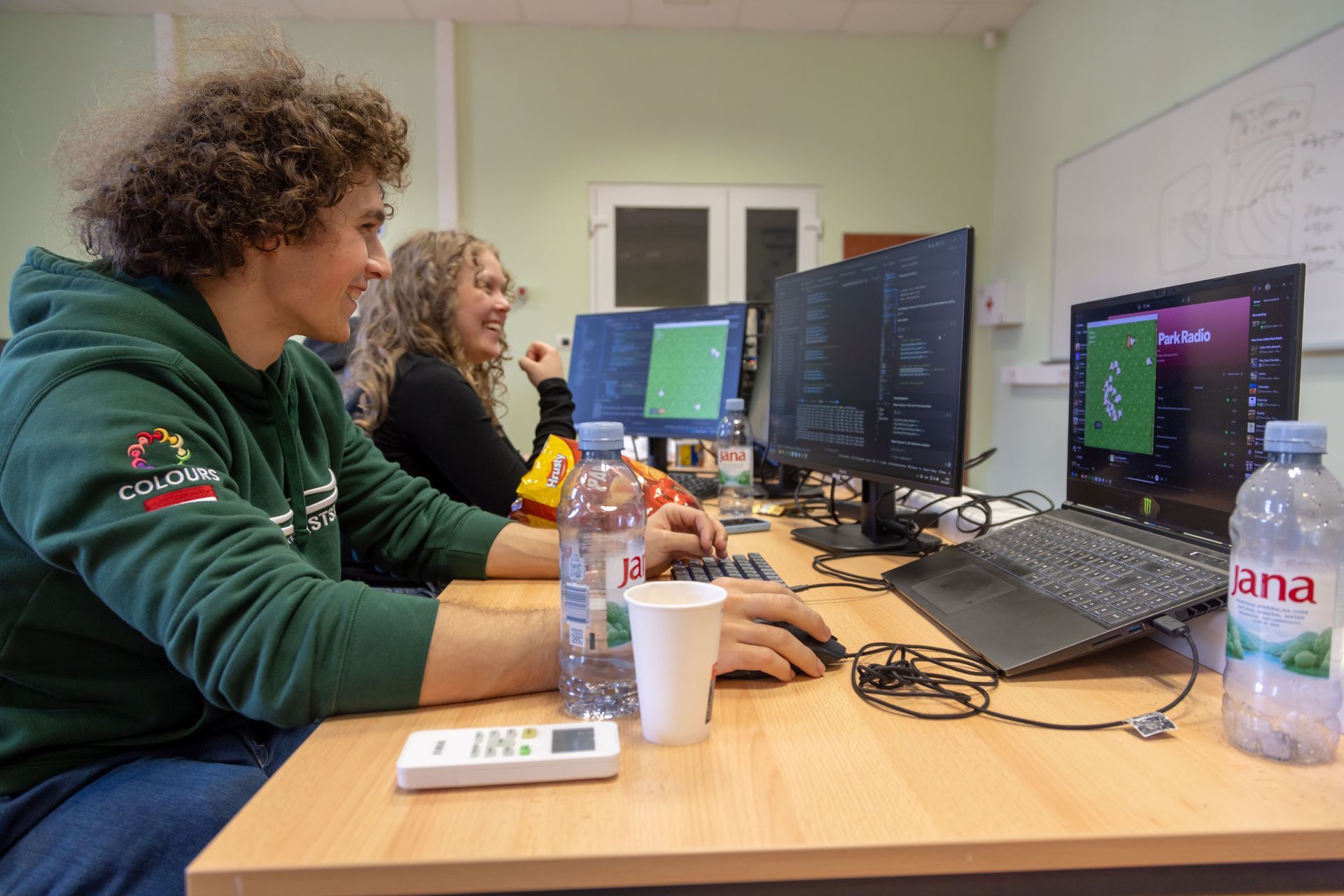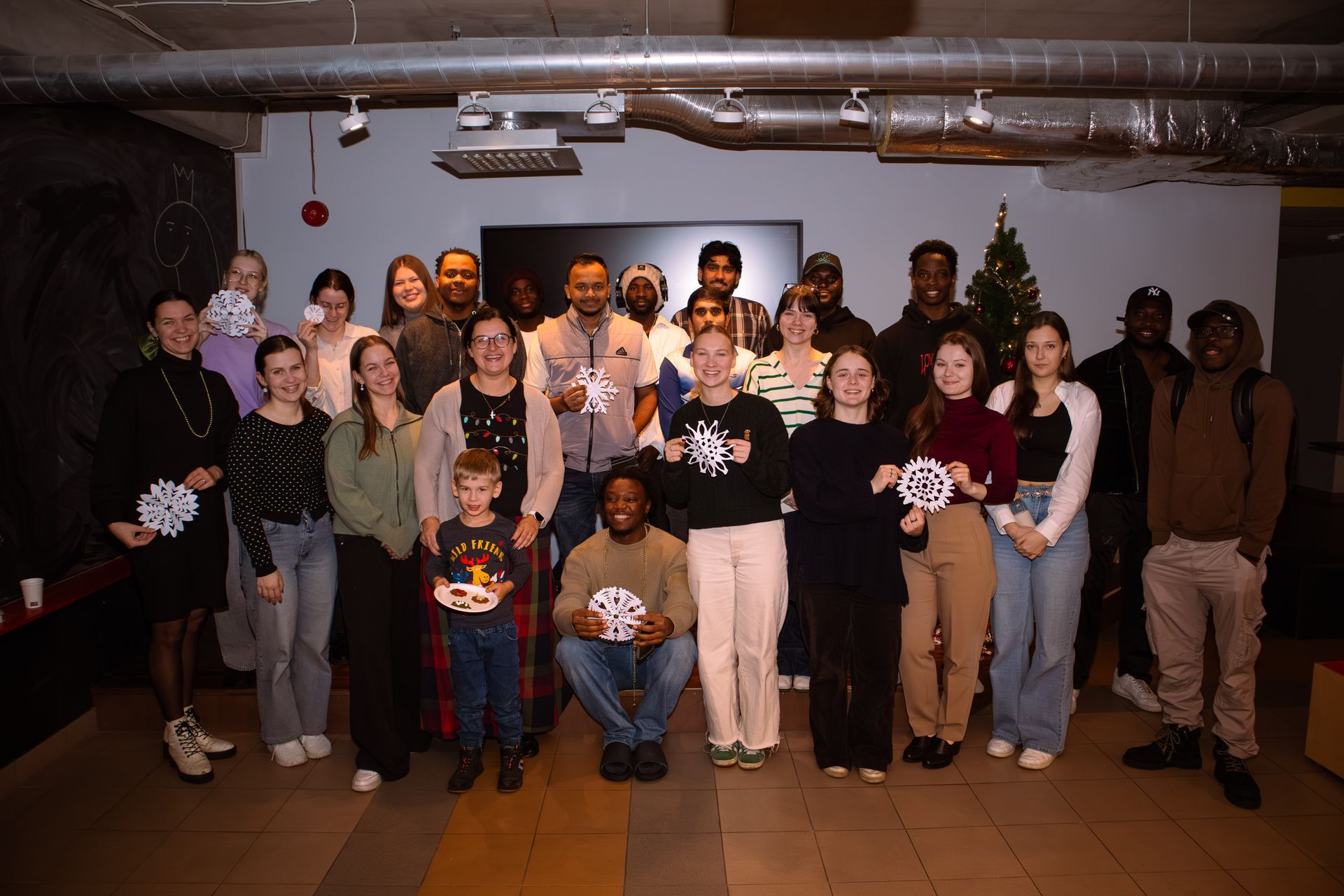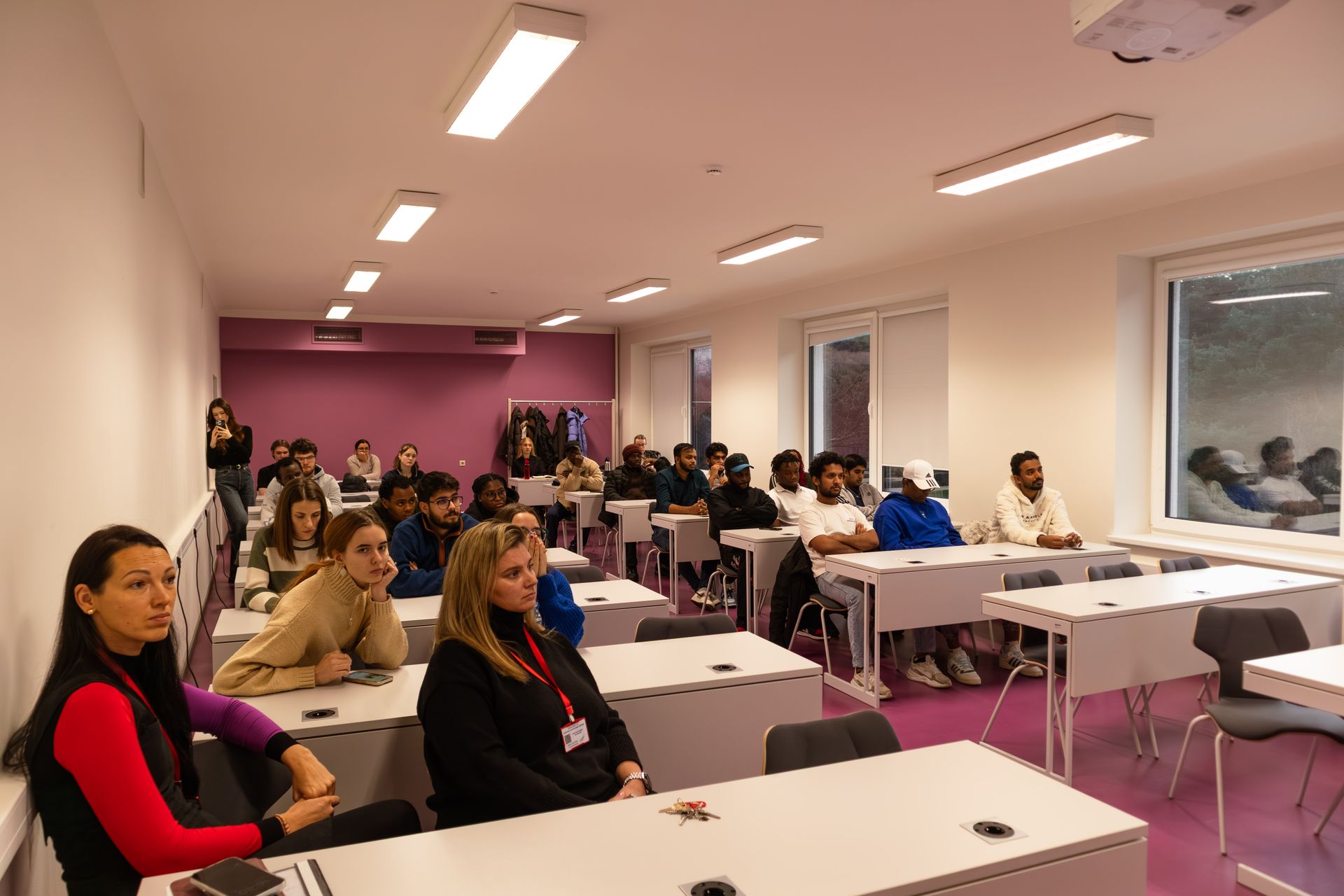Probe Developed by Electronics Engineering Students Carries a Kombucha Can to an Altitude of 30 km
Electronics engineering students from Ventspils University of Applied Sciences (VUAS) developed a probe that carried a can of “Rudy’s Kombucha” into near space, reaching an impressive altitude of 28,690 meters – nearly 30 kilometers above the Earth’s surface. While trying to locate the probe afterward, the students encountered major GPS signal disturbances across the Kurzeme region, so they called on radio amateurs for assistance. Working together, they successfully located the probe near Dobele.
The space mission probe was equipped with a GoPro camera that captured both the launch and the breathtaking flight. After the controlled explosion of the probe’s balloon at nearly 30 kilometers altitude, a parachute opened, ensuring the can’s safe return to Earth. The probe was launched from Ventspils airfield and, after flying approximately 140 kilometers, landed near Dobele.
Jānis Šate, Director of the Electronics Engineering study program at Ventspils University of Applied Sciences, explained:
“The company knew that our students develop probes, and they had the idea to attach a beverage can and launch it into space. Technically, it’s more accurate to say it was launched into the stratosphere. We discussed it in August, and within a few months, the electronics engineering students built the probe. It’s a group project in the third year of studies, and this collaboration added extra value.
The most challenging part of launching the probe is creating the electronic system attached to the parachute and helium balloon. The balloon rises to about 30 kilometers, where air pressure drops, the balloon bursts, and the probe descends to Earth. Launching it is easy – the hard part is tracking and recovering it afterward. A GPS navigation system is required to continuously transmit the probe’s location. The students’ task was to design an electronic system that can operate in the stratosphere, where temperatures drop to –40°C.”
“We coordinated the launch with the Civil Aviation Agency since air traffic is affected, and we also arranged it with Ventspils Airport. Eventually, the probe was found near Dobele, though there were unexpected complications – due to the global situation, GPS communications are regularly disrupted from Königsberg (Kaliningrad, Russia). Unfortunately, we launched on one of those days when signal interference over Kurzeme and the Baltic Sea was particularly strong. That meant that when the probe ascended above ten kilometers, our system showed it was no longer over Kuldīga, but over Kaliningrad. From there, spoofed GPS signals were being transmitted to mislead moving objects.
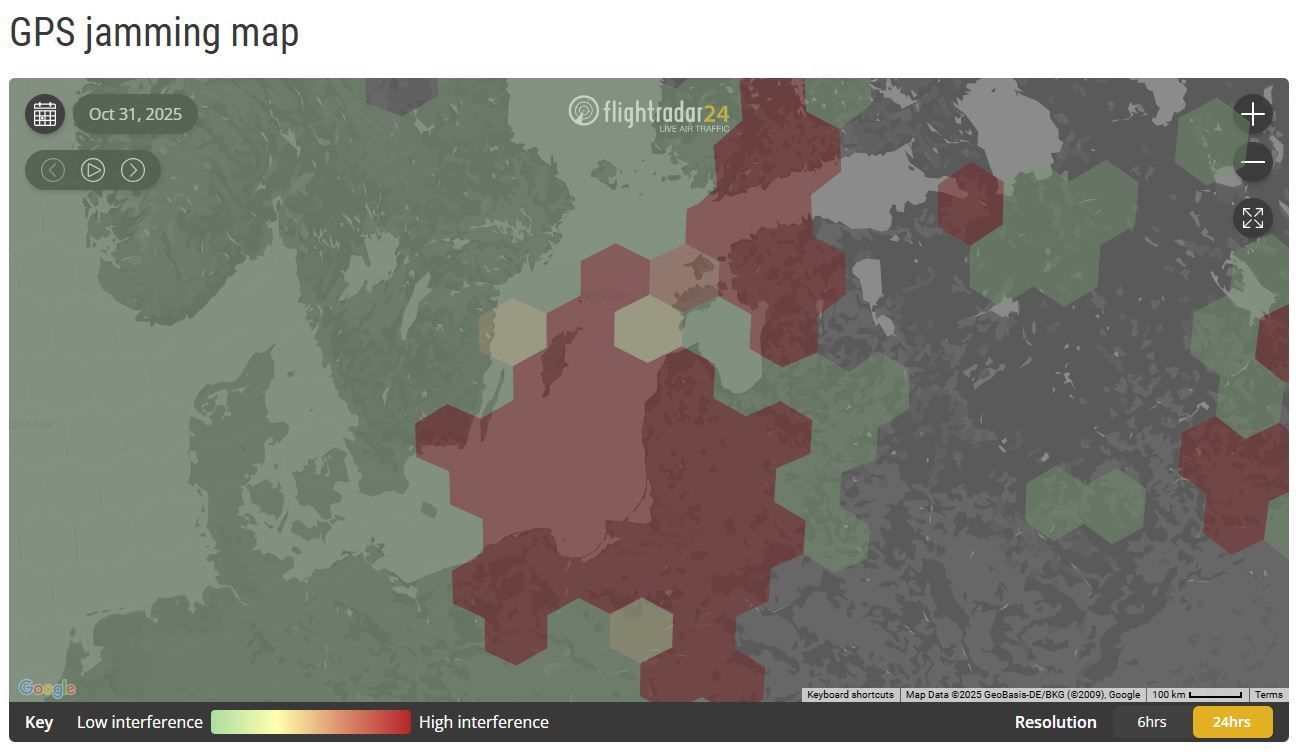
Map showing GPS signal interference on the day of the launch
Source:
flightradar24.com – “GPS jamming map”
Since GPS tracking was difficult, university students shared the information with radio amateurs, who actively joined in and helped search for the probe. It was eventually found at the “Medņi” homestead in Dobele municipality. The owner, Juris, was initially surprised by the arrival of strangers, but after the radio amateurs explained the situation, he gladly helped, and together they located the probe.
Once recovered, radio amateurs Andrejs Puķītis (callsign YL3LP) and Kārlis Goba (callsign YL3JG) returned the probe to the Ventspils University students. This was an excellent learning experience, which the students thoroughly enjoyed.
Special thanks go to the Latvian natural beverage brand “Rudy’s Kombucha” for their collaboration, as well as to the Civil Aviation Agency, Ventspils Airport staff, and SIA “Linde Gas.”
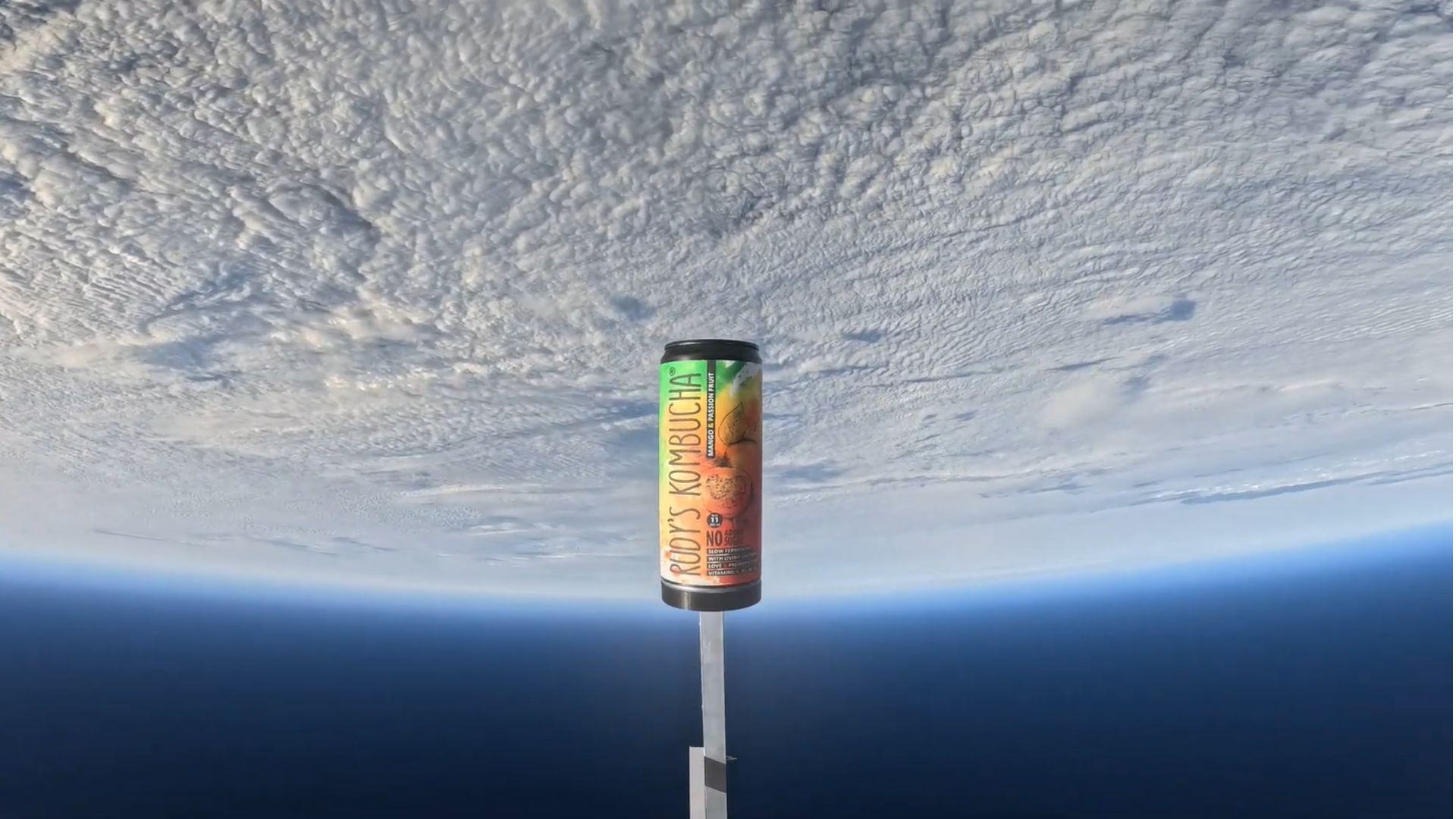
Share on other platforms
Other news

